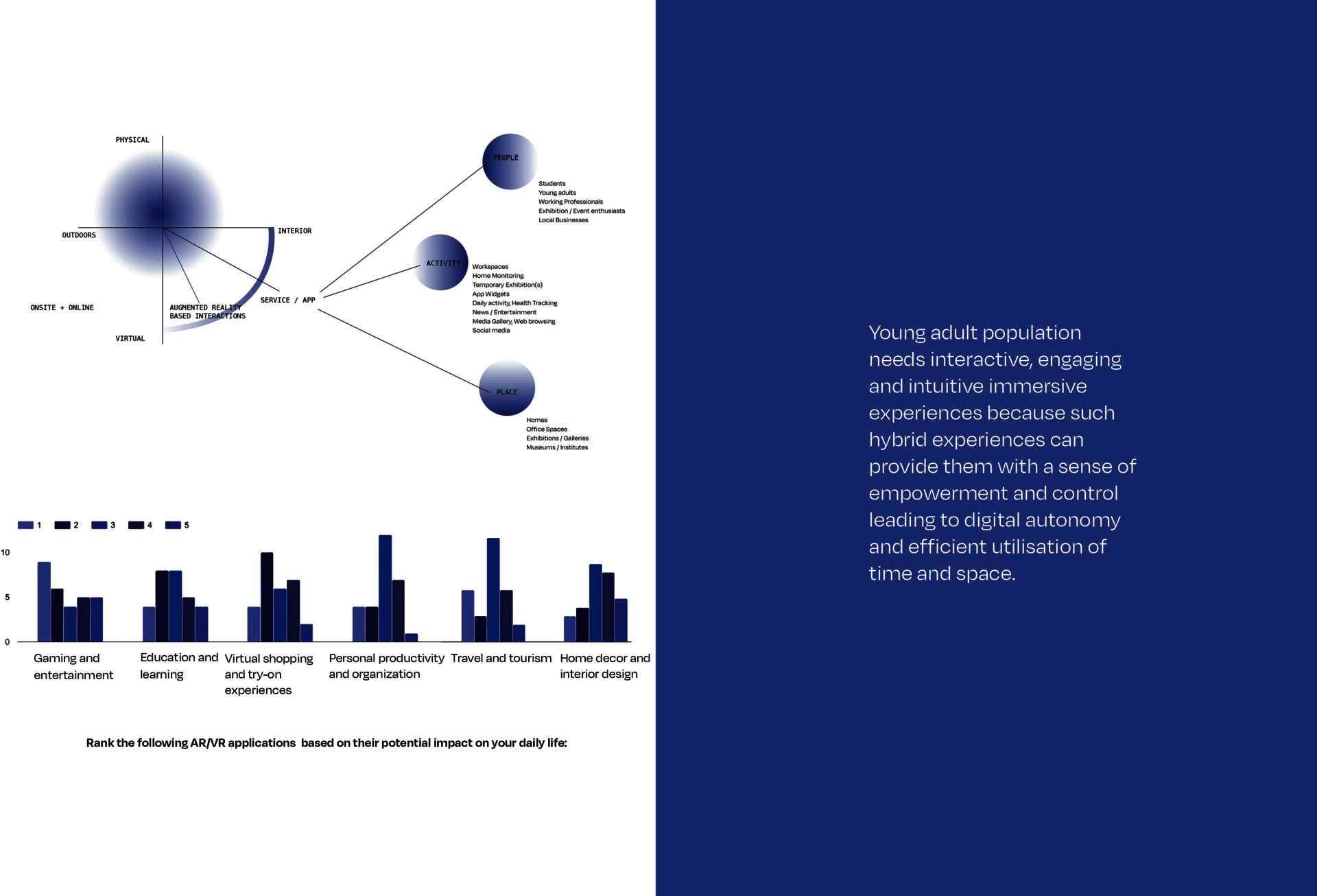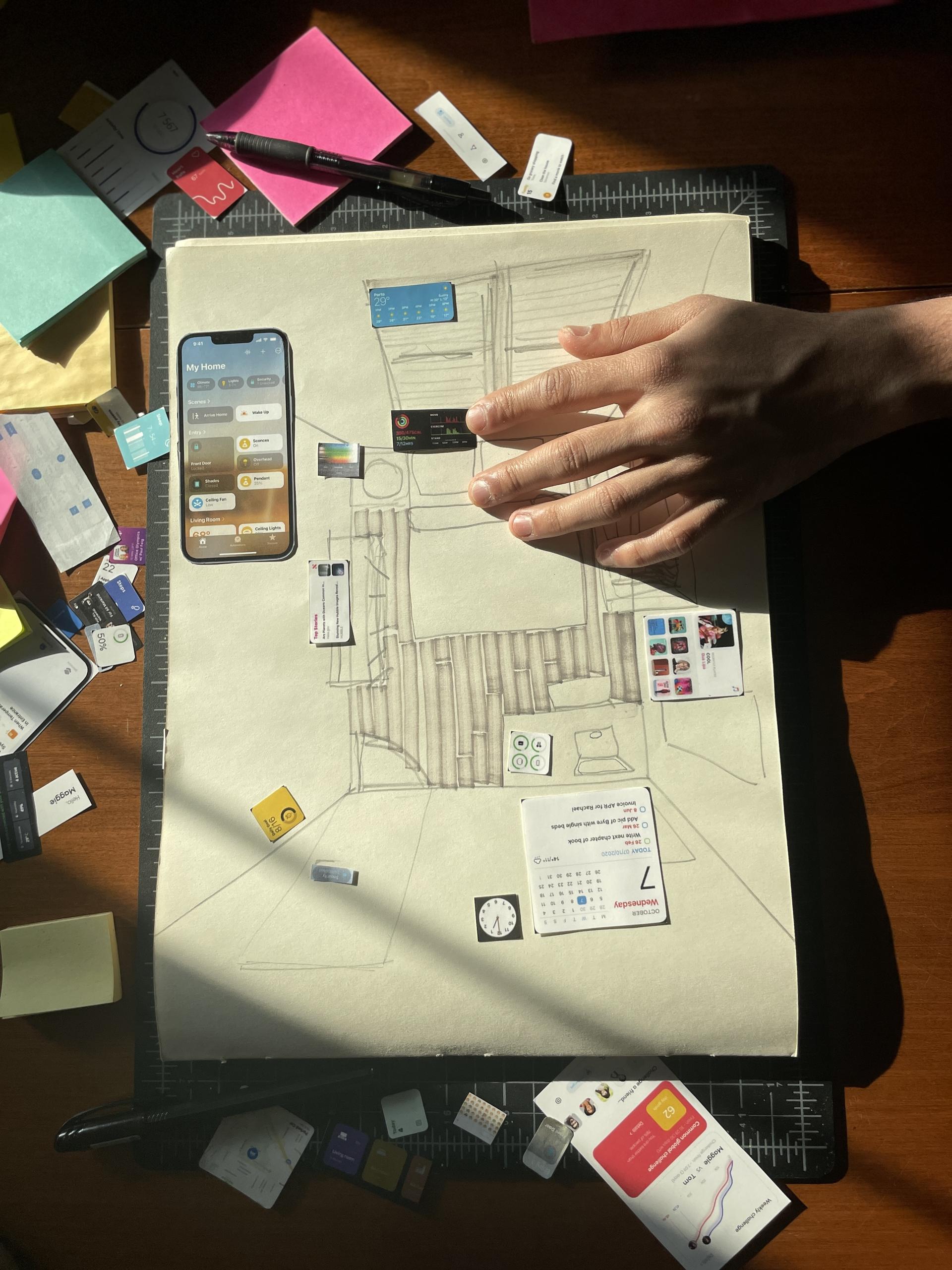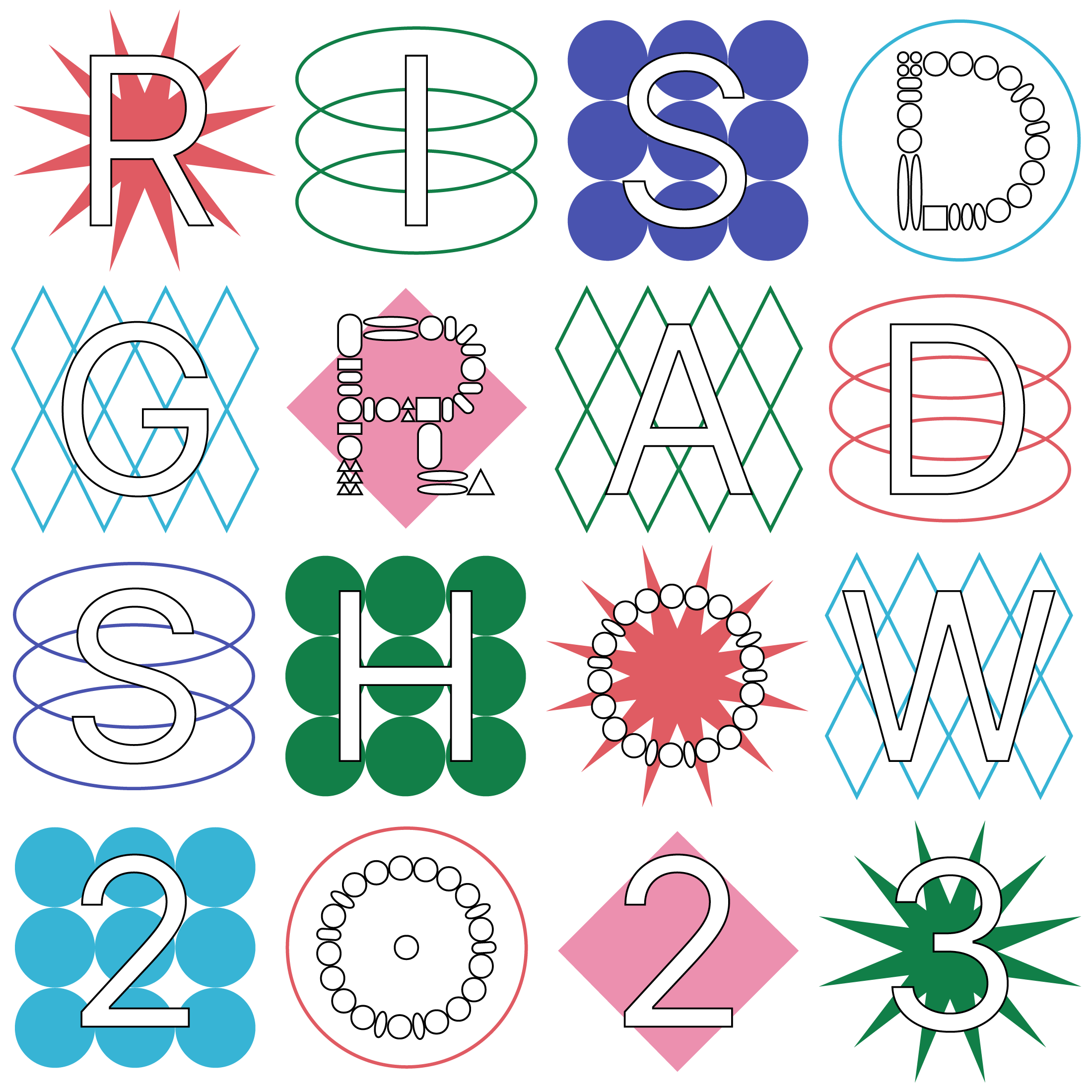My research stems from 2 key questions :
1. What qualifies as a good interaction and what are the cues involved?
2. How might we create an organisation framework to prioritise well-being and productivity by enhancing the quality of human computer interactions indoors?
To answer these through explorations and testing, I consider spaces and activity as potential barometers to assess interactivity within a simple framework. Initial findings suggest that users often feel burnout and information overload while using devices and screens. Working across devices creates problems of portability and redundancy.
I primarily aim to create product solutions / experiences for college students, young adults and working professionals aged 22–35. From a user survey, 33 responses were collected to analyse and enhance the quality of indoor interactions adapted to multiple preferences and needs.
A desire for immersive experiences that transport the user to different worlds and enable them to explore and interact with their surroundings in new ways was expressed. Seeing personal photos or scans of spaces, elements of nature, educational content, 3D visualizations in biology, home improvements and health tracking were some of the suggested use cases.




